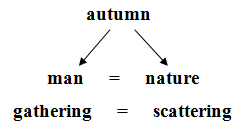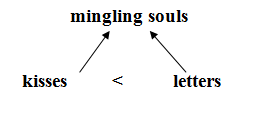THE ANALYSIS OF PARADOXICAL ENGLISH STATEMENTS BY USING SCHEMES
Abstract
It is necessary to clarify the key terminology used in the article. On the modern stage of the development of language education a substantial theoretical corpus on teaching reading in a foreign language has been accumulated and is reflected in the works of the researches: V.A. Buchbinder, M.L. Weisburd, Z.I. Klychnikova, A.A. Leontiyev, E.I. Passov, S.R. Plotnikov, O.A. Rozov, G.V. Rogova, S.K. Folomkina and others [4, P. 133]. The task of teaching reading, as an independent communicative skill, is to teach learners to extract sufficient amount of information for solving a specific communicative problem, using certain reading techniques [1, P. 5], [1, P. 6]. Under reading technique we understand a succession of operations, conditioned by the aim of reading and characterized by specific combination of semantic and perceptive processing of the visual material .We consider analytical reading as a kind of reading serving a means of understanding more complex texts with linguistic analysis elements. [4, P. 135]. Speaking about the sets of such reading, it is worth mentioning A.A. Miroljubov [3, P. 8], stating the rethinking of visual information, discovery of semantic ties and understanding of the text message as the purposes of reading.
Unfortunately, it is analytical reading that presents essential difficulty for students due to misunderstanding of the abstract logic and tools of analysis, which results in the lack of motivation. According to A.V. Fakhrutdinova and A.T. Khusainova [6, P. 330], it is crucial to create a situation of success while teaching a language, stimulating the motivation development with the help of visual aids and exercises among other things. And in case with analytical reading supportive notes in the form of reference schemes, expressing information units, various interrelations between them and a set of signs, specifying abstract material, can be particularly instrumental for learners[1, P. 17].
As we know, the full understanding of the text suggests analysing of the 3 kinds of textual information: factual (presented directly within the text), connotational (implied ideas) and conceptual (main concepts).Working with schemes trains the skill of outlining main concepts, fosters the development of logical thinking. This method is mostly justified within the post-reading analysis – the stage of information transforming and presenting it as an algorythm, expressed in the interrelation of parts of the text. [5, P. 205].
Alongside with the adequate choice of graphic means of processing information, the effectiveness of teaching analytical reading is, to a great extent, influenced by the right selection of the material for analysis. Thus we propose that a teacher of English should use the principle of cultural congruity, meaning that the culture of the English-speaking countries should be incorporated into the study tasks. Famous sayings, proverbs, catchphrases of distinguished native speakers are not only an endless source of practical wisdom, but an insight into the mentality and traditions of the nation, effective means of enhancing country-study competence of learners. Moreover, the use of authentic utterances by foreign authors, poets, journalists pursue several aims at once: fostering learning motivation and emotional feedback, developing communicative skills and inspiring crosscultural competence, that is in line with the modern humanitarization trend in education.
In the present article we have chosen 3 statements by prominent representatives of British and American culture, united by the usage of the same stylistic device – paradox. That was done on purpose, as we view the analysis of paradoxical utterances as the most evident and applicable variant to demonstrate the technique of making up reference schemes. What differentiates paradox from other stylistic expressive means? Among the distinctive features of paradox, above all, is presence of a contradiction, possibility to solve the contradiction, finding common characteristics of specific notions. E.N. Zabotina points out, that the dialectical triad of paradox structure “thesis-antithesis-synthethis”, where contrasting features of an object act as thesis and antithesis, and synthethis shows their interrelation, contributes to the adjustment of the differences [2, P. 38]. Consequently, the paradox is resolved with a new sense, quality and relation.
Let us present an example of schematic analysis of several paradoxical quotations in English.
«For man, autumn is a time of harvest, of gathering together. For nature, it is a time of sowing, of scattering abroad». Edwin Way Teale (an American naturalist and author) [7]
The verbs “gathering” and “scattering” alone have diametrically opposed meanings: to congregate and to disperse, being two poles of the unity, expressed by the notion “autumn”. That is the structural analysis of the statement:
The illustrativeness of the chart, due to the positioning ideas in two (on the scheme) or more dimensions, allows language learners to find out that “autumn” is the main concept of the utterance; “man” and “nature” – two specific notions, tied with the key uniting concept of “autumn” and coordinated with each other, thus presenting equal in importance notions. Since analytical reading focuses on structural analysis of language units and exact understanding of the author’s idea, it is worthwhile searching for the covert question to the answer given by the statement. The implied question for the above given phrase is:
- What is autumn for man and nature?
OR
- What is appropriate to do for man and nature in autumn?
Man as a part of nature displays opposite characteristics in a particular season, namely in autumn. Nevertheless the utterance is true, reflecting the eternal course of nature. The following components of paradoxical utterances’ analysis may be singled out:
- Statement = The text and its meaning
- Structure = The ties between general and specific concepts; coordination and subordination.
- Strategies = Revealing the relations between ideas; questions to the answers given in the text.
- Underlying idea = What is implied but not announced.
- Analogy = Metaphoric, figurative likeness of elements, not literally resemblant.
- Conclusion = Deductions based on facts (and implications)
- Metaphors = True figurative statement.
- Size = Small texts consist of the same elements as bigger ones.
To prove with reasons we will provide the schematic analysis of additional 2 quotes:
1) «More than kisses, letters mingle souls». John Donne. (an English poet and preacher)[8]
Though the concepts “kisses” and “letters” are on the same level of generalization, as shown in the chart, “letters” is a stronger factor, influencing the idea of “mingling souls” (joining souls together). Besides, such elemens as analogy and metaphor are vividly demonstrated in the utterance. Thus “kisses” and “letters” are being figuratively compared as two analogous notions, contributing to the same process of “bringing souls together”. The poetic assumption of the mingling effect of kissing and correspondence for people is true, being a genuine metaphor.
2) «It’s paradoxical, that the idea of living a long life appeals to everyone, but the idea of getting old doesn’t appeal to anyone». Andy Rooney. (famous American journalist). [9]
One more paradox: “living for a long life” is unthinkable without “getting old”, being two equal in importance manifestations of “life”, positioned on the same level in the scheme. Though, by all means, longevity is a posive one and ageing is a negative aspect of life. The passage with “appealing to everyone or no one” is compressed in two simple notions with opposite signs, which repeatedly illustrates the summarizing options of the schemes as a means of working on the text.
In conclusion of the article we would give some practical recommendations referring to the implementation of the method in its different variations. We suggest that it should be used in groups with Intermediate (and higher) level of English during Home Reading lessons in order to minimaze possible lexical difficulties and allow a substantial amount of time for preparation activities at home and in class. The individual analysis of English proverbs, catchphrases, poems and prosaic texts using the scheme technique, comparing English texts with Russian analogues and according reference charts, writing essays based on the suggested conceptual charts, may serve as examples of tasks for language students.
References
Boretskaja N. S. Ispolzovanije sovremennyh tekhnologij pri rabote s tekstom na urokah anglijskogo jazyka [Using modern technologies working on the text at English lessons] / N. S. Boretskaja [Electronic resource] P.1-30 – URL: http://nsportal.ru/shkola/inostrannye-yazyki/angliiskiy-yazyk (accessed: 29.01.2017) [in Russian]
Zabotina E. N. K voprosu o kognitivnykh aspektakh paradoksa [The issue of cognitive aspects of paradox] / E. N. Zabotina //Vestnik Leningradskogo gosudarstvennogo universiteta im. A. S. Pushkina [Bulletin of Leningrad State University n.a. A.S. Pushkin]. – Saint-Petersburg, 2010. – Issue 1, Vol. 5. – P. 34-42 [in Russian]
Miroljubov A. A. Obuchenije inostrannym jazykam v svete reformy shkoly [Teaching foreign languages in the light of the school reform] / А. А. Miroljubov //Inostrannye yazyki v shkole [Foreign languages at school]. – 1996. – №2. – P.4-11. [in Russian]
Plaskina M. V. Analyz sovremennyh teorij obuchenija chteniju na inostrannom jazyke [The analysis of modern theories of teaching reading in a foreign language] / M. V. Plaskina // Problemy i perspektivy razvitija obrazovanija [The Problems and Perspectives of Education Development]: Materialy V Mezhdunarodnoj nauchnoj konferencii (Perm, Mart 20-23, 2014) [The Proceedings of V International Scientific Conference (Perm, March 20-23, 2014]. – Perm: Mercurij, 2014. – P. 133-136. [in Russian]
Svetlakova E. K. Ispolzovanije opor pri obuchenii inojazychnomu chteniju [The use of reference aids in teaching reading in a foreign language] / E. K.Svetlakova, I. A. Andreeva //Perspektivy nauki-2016[Scientific Perspectives-2016]:Materialy III Mezhdunarodnogo konkursa nauchno-issledovatelskih rabot (Kazan’, Aprel’ 29, 2016)[The Proceedings of the III International Distance Contest of Scientific Papers (Kazan, April 29, 2016)] – Kazan: Publishing house: “Roketa Sojuz”, 2016.- Vol.1: Social’no-gumanitarnyje nauki [Social and Humanitarian Sciences]. – P.204-206. [in Russian]
Khusainova A.T. Mezhpredmetnaja integracija pri obuchenii studentov vuzov na primere izuchenija inostrannogo jazyka [Intersubject integration while teaching students a foreign language] / A. T.Khusainova, A. V. Fakhrutdinova//Uchenyje zapiski Kazanskoj gosudarstvennoj akademii veterinarnoj medicyny im. N.E. Baumana [Scientific Journal of Kazan State Academy of Veterenarian Medicine n.a. N.E. Bauman]. – Kazan, 2014. – №3. – P.328-332. [in Russian]



